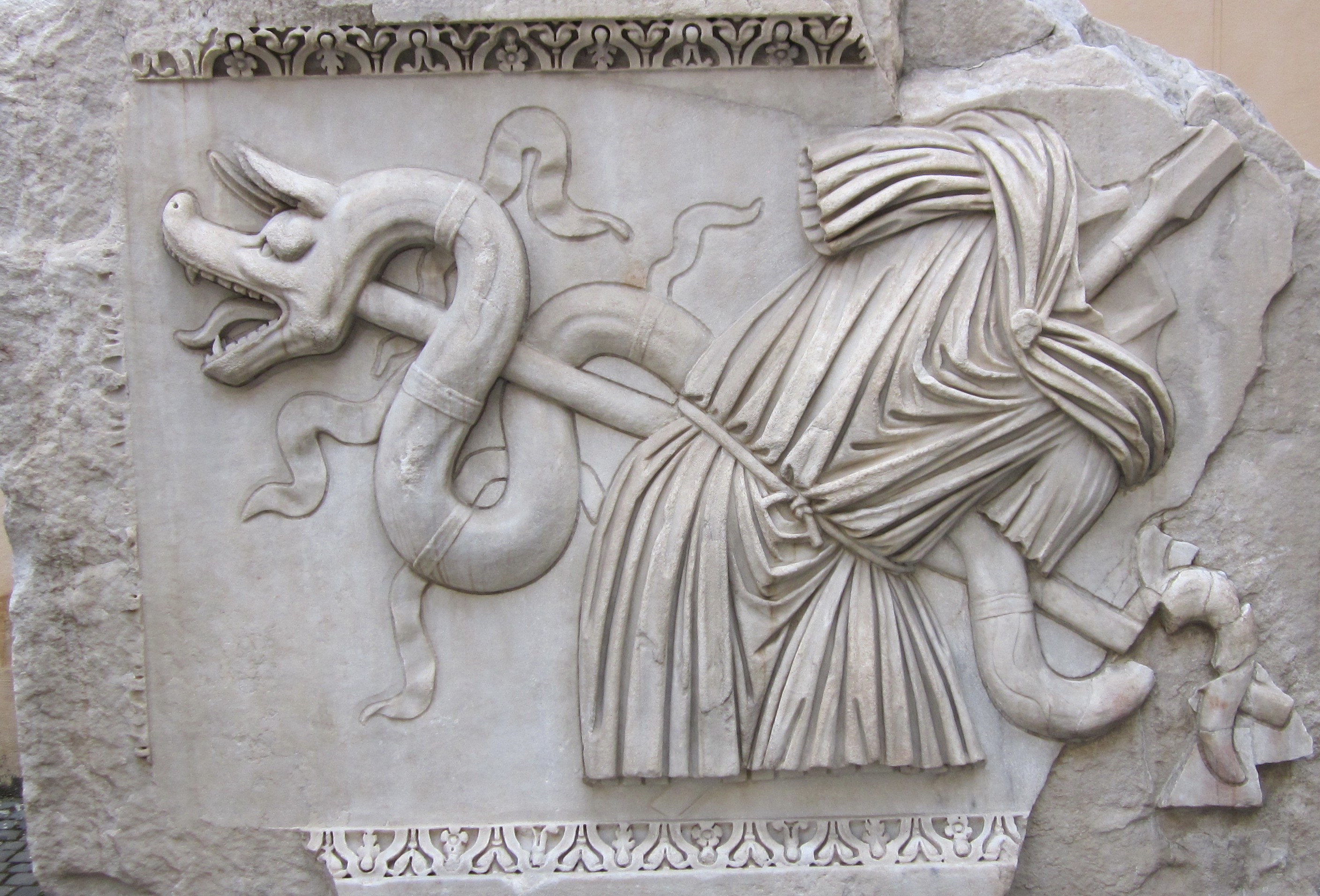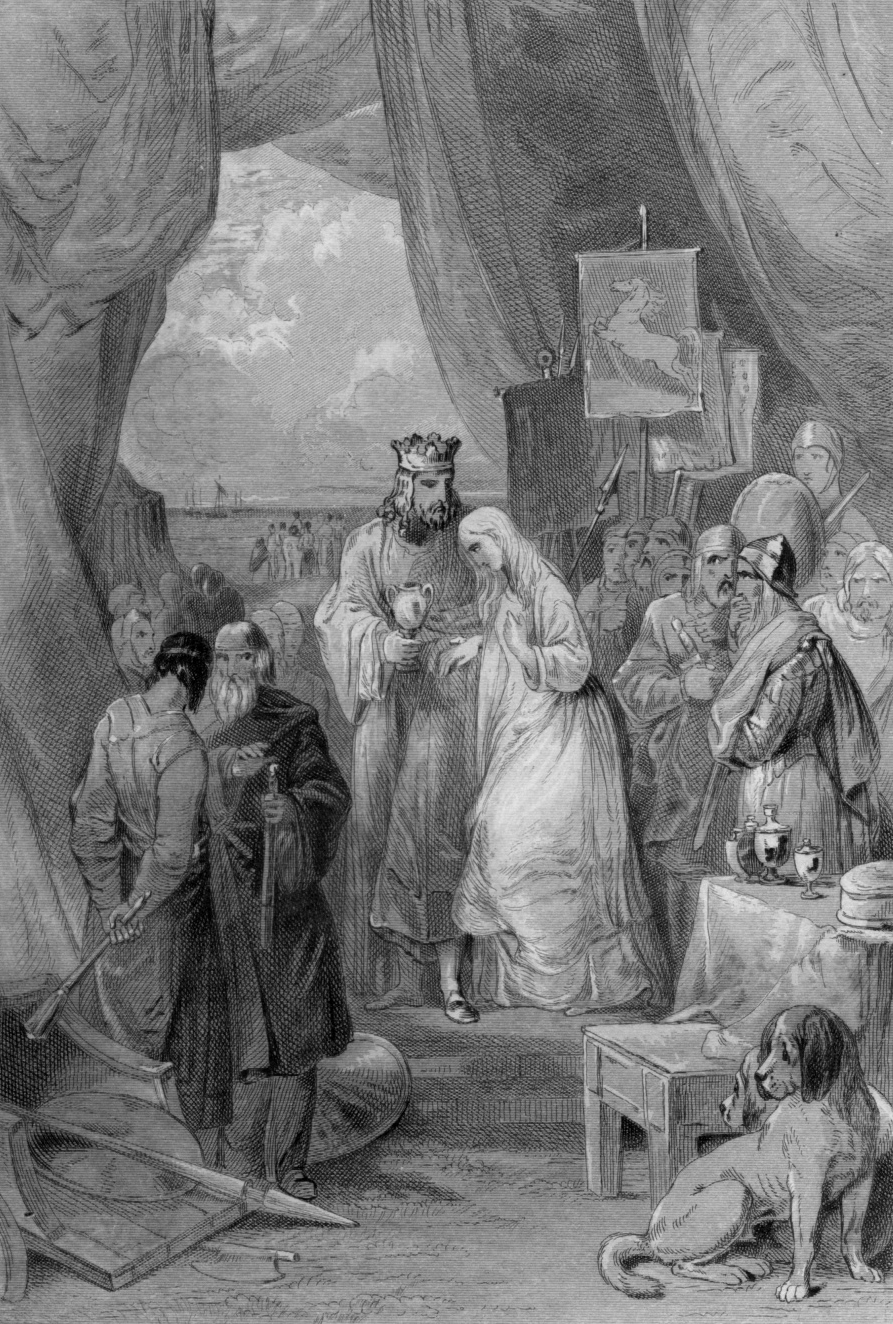|
Welsh Dragon
The Welsh Dragon (, meaning 'the red dragon'; ) is a heraldic symbol that represents Wales and appears on the national flag of Wales. Ancient leaders of the Celtic Britons that are personified as dragons include Maelgwn Gwynedd, Mynyddog Mwynfawr and Urien, Urien Rheged. Later Welsh people, Welsh "dragons" include Owain Gwynedd, Llywelyn ap Gruffudd, Llywelyn ap Gruffydd and Owain Glyndŵr. The red dragon appears in the ancient ''Mabinogion'' story of Lludd and Llefelys where it is confined, battling with an invading white dragon, at Dinas Emrys. The story continues in the , written around AD 829, where Vortigern, Gwrtheyrn, King of the Britons is frustrated in attempts to build a fort at Dinas Emrys. He is told by a boy, Emrys, to dig up two dragons fighting beneath the castle. He discovers the white dragon representing the Anglo-Saxons, which is soon to be defeated by the red dragon of Wales. The red dragon is now seen as National symbols of Wales, symbolising Wales, present ... [...More Info...] [...Related Items...] OR: [Wikipedia] [Google] [Baidu] |
Vortigern
Vortigern (; , ; ; ; Old Breton: ''Gurdiern'', ''Gurthiern''; ; , , , etc.), also spelled Vortiger, Vortigan, Voertigern and Vortigen, was a 5th-century warlord in Sub-Roman Britain, Britain, known perhaps as a king of the Britons or at least connoted as such in the writings of Bede and Gildas. His existence is contested by scholars and information about him is obscure. He may have been the "superbus tyrannus" said to have invited Hengist and Horsa to aid him in fighting the Picts and the Scottish people, Scots, whereupon they revolted, killing his son in the process and forming the Kingdom of Kent. It is said that he took refuge in North Wales, and that his grave was in Dyfed or the Llŷn Peninsula. Gildas later denigrated Vortigern for his misjudgement and also blamed him for the loss of Britain. He is cited at the beginning of the genealogy of the early Kingdom of Powys, Kings of Powys. Medieval accounts Gildas The 6th-century cleric and historian Gildas wrote ''De Excidio ... [...More Info...] [...Related Items...] OR: [Wikipedia] [Google] [Baidu] |
Ribchester
Ribchester () is a village and civil parish within the Ribble Valley district of Lancashire, England. It lies on the banks of the River Ribble, northwest of Blackburn and east of Preston, Lancashire, Preston. The village has a long history with evidence of Bronze Age beginnings. It is well known as a significant Ancient Rome, Roman site being the location of a Roman cavalry fort called Bremetennacum, some parts of which have been exposed by excavation. In common with many towns and villages in East Lancashire its later history was dominated by cotton weaving; firstly in the form of hand-loom weaving and later in two mills. Neither mill still operates and the village is primarily a commuter town, dormitory village for commuters to the town of Blackburn and the cities of Preston and Manchester. The main access road into Ribchester is the B6245 road, B6245. From the north-west, this is Preston Road, which merges into Church Street, Ribchester, Church Street. From the east, it is ... [...More Info...] [...Related Items...] OR: [Wikipedia] [Google] [Baidu] |
Sarmatians
The Sarmatians (; ; Latin: ) were a large confederation of Ancient Iranian peoples, ancient Iranian Eurasian nomads, equestrian nomadic peoples who dominated the Pontic–Caspian steppe, Pontic steppe from about the 5th century BCE to the 4th century CE. The earliest known reference to the Sarmatians occurs in the Avesta, where they appear as ''Sairima-'', which in later Iranian sources becomes ''*Sarm'' and Salm (Shahnameh), ''Salm''. Originating in the central parts of the Eurasian Steppe, the Sarmatians formed part of the wider Scythian cultures. They started migrating westward around the fourth and third centuries BCE, coming to dominate the closely related Scythians by 200 BCE. At their greatest reported extent, around 100 BCE, these tribes ranged from the Vistula River to the mouth of the Danube and eastward to the Volga, bordering the shores of the Black Sea, Black and Caspian Sea, Caspian seas and the Caucasus to the south. In the first century CE, the Sarmatians beg ... [...More Info...] [...Related Items...] OR: [Wikipedia] [Google] [Baidu] |
Marcus Aurelius
Marcus Aurelius Antoninus ( ; ; 26 April 121 – 17 March 180) was Roman emperor from 161 to 180 and a Stoicism, Stoic philosopher. He was a member of the Nerva–Antonine dynasty, the last of the rulers later known as the Five Good Emperors and the last emperor of the Pax Romana, an age of relative peace, calm, and stability for the Roman Empire lasting from 27 BC to 180 AD. He served as Roman consul in 140, 145, and 161. Marcus Aurelius was the son of the praetor Marcus Annius Verus (father of Marcus Aurelius), Marcus Annius Verus and his wife, Domitia Calvilla. He was related through marriage to the emperors Trajan and Hadrian. Marcus was three when his father died, and was raised by his mother and Marcus Annius Verus (II), paternal grandfather. After Hadrian's Adoption in ancient Rome, adoptive son, Aelius Caesar, died in 138, Hadrian adopted Marcus's uncle Antoninus Pius as his new heir. In turn, Antoninus adopted Marcus and Lucius Verus, Lucius, the son of Aelius. ... [...More Info...] [...Related Items...] OR: [Wikipedia] [Google] [Baidu] |
Parthian Empire
The Parthian Empire (), also known as the Arsacid Empire (), was a major Iranian political and cultural power centered in ancient Iran from 247 BC to 224 AD. Its latter name comes from its founder, Arsaces I, who led the Parni tribe in conquering the region of Parthia in Iran's northeast, then a satrapy (province) under Andragoras, who was rebelling against the Seleucid Empire. Mithridates I ( BC) greatly expanded the empire by seizing Media and Mesopotamia from the Seleucids. At its height, the Parthian Empire stretched from the northern reaches of the Euphrates, in what is now central-eastern Turkey, to present-day Afghanistan and western Pakistan. The empire, located on the Silk Road trade route between the Roman Empire in the Mediterranean Basin and the Han dynasty of China, became a center of trade and commerce. The Parthians largely adopted the art, architecture, religious beliefs, and regalia of their culturally heterogeneous empire, which encompassed Pe ... [...More Info...] [...Related Items...] OR: [Wikipedia] [Google] [Baidu] |
Dacians
The Dacians (; ; ) were the ancient Indo-European inhabitants of the cultural region of Dacia, located in the area near the Carpathian Mountains and west of the Black Sea. They are often considered a subgroup of the Thracians. This area includes mainly the present-day countries of Romania and Moldova, as well as parts of Ukraine, Moravian Banovina, Eastern Serbia, Northern Bulgaria, Slovakia, Hungary and Southern Poland. The Dacians and the related Getae spoke the Dacian language, which has a debated relationship with the neighbouring Thracian language and may be a subgroup of it. Dacians were somewhat culturally influenced by the neighbouring Scythians and by the Celtic invasion of the Balkans, Celtic invaders of the 4th century BC. Name and etymology Name The Dacians were known as ''Geta'' (plural ''Getae'') in Ancient Greek writings, and as ''Dacus'' (plural ''Daci'') or ''Getae'' in Roman Empire, Roman documents, but also as ''Dagae'' and ''Gaete'' as depicted on ... [...More Info...] [...Related Items...] OR: [Wikipedia] [Google] [Baidu] |
Persians
Persians ( ), or the Persian people (), are an Iranian ethnic group from West Asia that came from an earlier group called the Proto-Iranians, which likely split from the Indo-Iranians in 1800 BCE from either Afghanistan or Central Asia. They are indigenous to the Iranian plateau and comprise the majority of the population of Iran.Iran Census Results 2016 United Nations Alongside having a common cultural system, they are native speakers of the and of the |
Indian People
Indian people or Indians are the Indian nationality law, citizens and nationals of the India, Republic of India or people who trace their ancestry to India. While the demonym "Indian" applies to people originating from the present-day India, it was also used as the identifying term for people originating from what is now Bangladeshi diaspora, Bangladesh and Pakistani diaspora, Pakistan prior to the Partition of India in 1947. In 2022, the population of India stood at 1.4 billion people, of various Indian ethnic groups, ethnic groups. According to United Nations forecasts, India overtook China as the world's List of countries and dependencies by population, most populous country by the end of April 2023, containing 17.50 percent of the global population. In addition to the Indian population, the Non-resident Indian and Overseas Citizen of India, Indian overseas diaspora also boasts large numbers, particularly in former British Empire, British colonies due to the historical ... [...More Info...] [...Related Items...] OR: [Wikipedia] [Google] [Baidu] |
Scythians
The Scythians ( or ) or Scyths (, but note Scytho- () in composition) and sometimes also referred to as the Pontic Scythians, were an Ancient Iranian peoples, ancient Eastern Iranian languages, Eastern Iranian peoples, Iranian Eurasian nomads, equestrian nomadic people who had migrated during the 9th to 8th centuries BC from Central Asia to the Pontic Steppe in modern-day Ukraine and Southern Russia, where they remained established from the 7th century BC until the 3rd century BC. Skilled in Horses in warfare, mounted warfare, the Scythians replaced the Agathyrsi and the Cimmerians as the dominant power on the western Eurasian Steppe in the 8th century BC. In the 7th century BC, the Scythians crossed the Caucasus Mountains and frequently raided West Asia along with the Cimmerians. After being expelled from West Asia by the Medes, the Scythians retreated back into the Pontic Steppe in the 6th century BC, and were later conquered by the Sarmatians in the 3rd to 2nd centuries ... [...More Info...] [...Related Items...] OR: [Wikipedia] [Google] [Baidu] |
Roman Britain
Roman Britain was the territory that became the Roman province of ''Britannia'' after the Roman conquest of Britain, consisting of a large part of the island of Great Britain. The occupation lasted from AD 43 to AD 410. Julius Caesar invaded Britain in 55 and 54 BC as part of his Gallic Wars. According to Caesar, the Britons had been overrun or culturally assimilated by the Belgae during the British Iron Age and had been aiding Caesar's enemies. The Belgae were the only Celtic tribe to cross the sea into Britain, for to all other Celtic tribes this land was unknown. He received tribute, installed the friendly king Mandubracius over the Trinovantes, and returned to Gaul. Planned invasions under Augustus were called off in 34, 27, and 25 BC. In 40 AD, Caligula assembled 200,000 men at the Channel on the continent, only to have them gather seashells () according to Suetonius, perhaps as a symbolic gesture to proclaim Caligula's victory over th ... [...More Info...] [...Related Items...] OR: [Wikipedia] [Google] [Baidu] |
Dacian Draco Capitolini Museum IMG 6304
Dacian may refer to: Relating to "Dacia" * of or relating to Dacia in southeastern Europe ** Dacians, the ancient Indo-European inhabitants of the cultural region of Dacia ** Dacian language * of or relating to one of the other meanings of Dacia Given name * Dacian or Dacianus, 4th-century Roman prefect who persecuted Christians * Dacian Cioloș (born 1969), Romanian agronomist, politician and former prime minister * Dacian Varga Dacian Şerban Varga (born 15 October 1984) is a Romanian former professional footballer who played as a winger. Career Childhood Varga began his football career at the age of 8, when his father took him at an indoor-football club based in ... (born 1984), Romanian footballer See also {{Disambiguation, given name Language and nationality disambiguation pages Romanian masculine given names Masculine given names ... [...More Info...] [...Related Items...] OR: [Wikipedia] [Google] [Baidu] |









